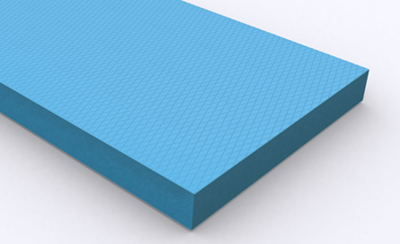General information
The parts of buildings with increased heat transmission are simply called thermal bridges. The internal surface temperature of these building parts is significantly below the surrounding surface and ambient temperature.
The most frequent thermal bridges are the socle, ring beams, lintels, radiator enclosures, parapets, reinforced concrete pillars, window sills, etc.
Other information
The absence of proper prevention of thermal bridges can cause significant heat loss. The moistness generated by surface condensation has a contrary effect to the comfort of the room. Low temperature of the inner surfaces occurs high relative humidity. It is often a breeding ground for mould-growth, surface damages and aesthetic problems. Preventing the development of thermal bridges should be taken care of in the design phase.
Thermal insulating by RAVATHERM™ XPS 300 WB may result significant advantages:
- Reduction of heat loss – energy saving (the transmission heatloss can be reduced with cca. 10%),
- Avoidance of mould-growth,
- Prevention of structural problems:
- surface condensation,
- aesthetic problems,
- crack formation,
- Comfort improvement.
RAVATHERM XPS 300 WB insulation boards are
- not sensitive to moisture,
- frost resistant,
- resistant to mechanical impacts,
- therefore retain the insulation value and strength during and after the construction period.
Due to the high resistance to water-vapour permeation, no vapour barrier is normally required when the insulation is situated on the internal side. To avoid thermal bridges, the accurate design of the structural details has decisive importance. The insulation value at thermal bridges and socle is recommended to be at least equal to the performance of the adjoining walls, roof or floor slab.

